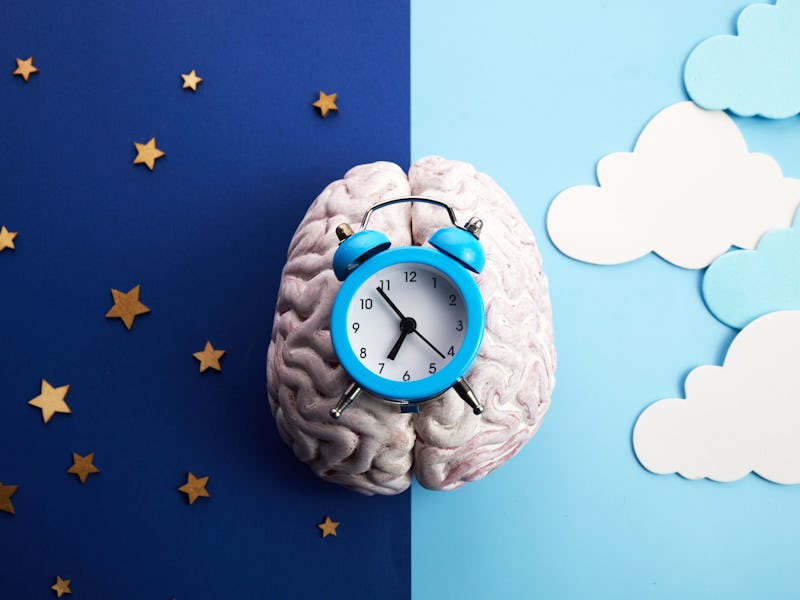Your Internal Clock Might Help You Optimize Your Workouts
Circadian rhythm isn’t just sleeping and waking.

Clocks existed long before smart watches and ticking timepieces. Our circadian rhythm, the internal clock driving most organisms — from bacteria to humans — is an ancient biological function that steers how our biology.
As researchers learn more about the circadian rhythm, they find new ways that our bodies, and those of other organisms, are influenced by it. A new study out this week provides another piece of evidence that exercise may also be connected to our internal clocks.
LONGEVITY HACKS is a regular series from Inverse on the science-backed strategies to live better, healthier, and longer without medicine. Get more in our Hacks index.
Following local body time
The gears that make this clock tick are called a transcription/translation feedback loop.
“What that means is that on a 24-hour cycle, [the clock] is involved in the induction of messages that can then lead to the production of proteins that can confer metabolism,” says Juleen Zierath, a physiology professor at Karolinska Institutet in Sweden. The way that high school students ferry to and from classes at precise times at the sound of a bell, cells receive messages that tell them to produce certain proteins at certain times.
Messenger ribonucleic acid (mRNA) is a one-stranded molecule of RNA, which contains transcriptions from DNA for producing proteins. Cells contain the organelle ribosomes, which read those transcripts and synthesize the protein. The cell translates the transcript, resulting in a protein.
Throughout those 24 hours, messages pile up. A feedback then suppresses those messages so the cells can keep moving. Zierath notes that this clock dictates “a good deal of our physiology,” including hormone release and blood pressure, as well as bedtime, of course.
Zierath served as the senior author of a study published last week in the journal Proceedings of the National Academy of Sciences. She and her team looked at circadian rhythm in mice and how it affects fat metabolism — which could be an analog in humans.
Benefits of keeping internal time
“There may be a time of day when you can optimize some of the health benefits of exercise,” Zierath tells Inverse. “That's what we're trying to figure out. How can you optimize the beneficial effect of exercise?”
Her team’s study looked at mice, which also use a circadian rhythm. They studied gene markers in fat cells that signaled fat burning after exercising.
Some of the transcription translations they looked at involved thermogenesis, or heat production involved in burning fat, as well as steroid hormone synthesis.
They divided mice into two groups. One group exercised three hours after waking up from their rest phase; mice are nocturnal, so their sign to become active is when the lights go off. This was the early active group. The other clan was the early rest phase group and would wake up to exercise after sleeping for only three hours during their normal resting time. In humans, that’s akin to sleeping from 10 p.m. to 6 a.m. followed by a 9 a.m. gym session versus sleeping from 10 p.m. to 1 a.m. and then hitting the gym at 1 a.m. Zierath acknowledges the extremes tested here and says that she’d like to look at a more realistic schedule in future studies, as well as humans instead of rodents.
The group correlating with a morning gym session, the researchers found, had more metabolic activity. Their fat cells were more sensitive to hormones called glucocorticoids and catecholamines, which are, respectively, steroids active in metabolism and hormones that influence the body’s resting state of homeostasis.
Since eating is another cue influencing circadian rhythm, Zierath’s team investigated the role food played. After all, the mice that exercised soon after waking up from a full rest period had effectively fasted. Even if they ate before exercising, that undigested food wasn’t yet available as energy. On the other hand, the mice that worked out three hours after falling asleep had spent their waking hours digesting food. So, they looked at both fed and fasted mice working out during a rest period and found no difference. In other words, whether you’ve eaten before exercising doesn’t influence metabolism in fat cells.
How it helps in the long run
Regarding Zierath’s particular study, there’s no word yet on how it affects humans over time because we don’t yet know how it functions in humans. The study didn’t evaluate long-term changes in the mice either, so there’s no evidence that this finding is related to increased weight loss in one group.
However, Zierath notes three studies that each found that timing does matter in metabolizing molecules if someone has a condition like type 2 diabetes. These three studies each concluded that moderate to vigorous exercise in the afternoon or night helps a diabetic person better control their glucose levels overnight.
“If you're a person with type 2 diabetes, and you had the choice to exercise in the morning or the afternoon, the afternoon might give me the extra boost of helping me keep my blood sugar lower during the evening, which ultimately would be in the long run better for my health,” Zierath says.
While we wait for more data on metabolizing fat at certain times of day, Zierath emphasizes that exercise at any time of day is far better than none at all. Burning fat, she says, also isn’t everyone’s exercise priority.
Hack score out of 10
⏰⏰⏰⏰ (4/10 in-tune body clocks)
This article was originally published on